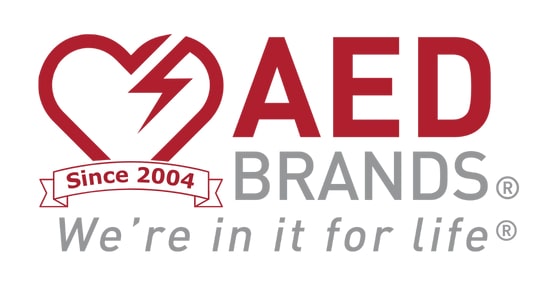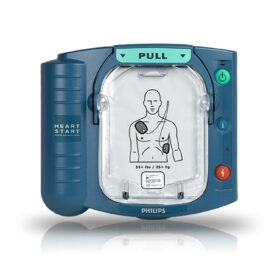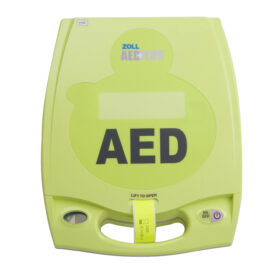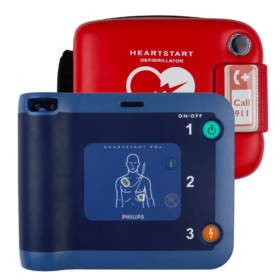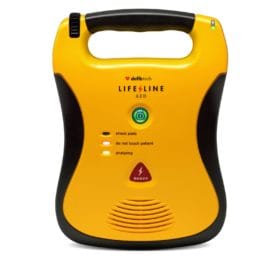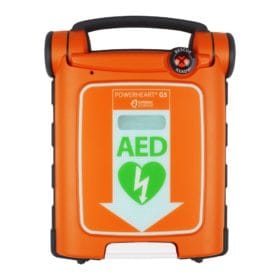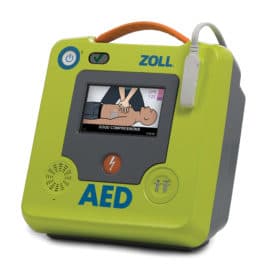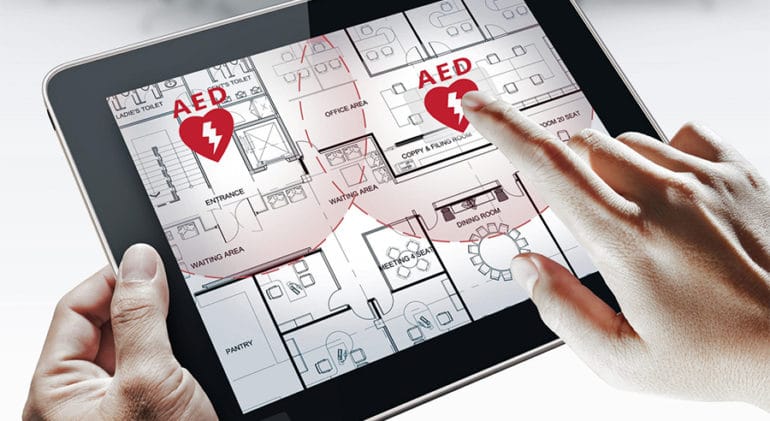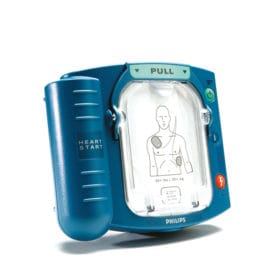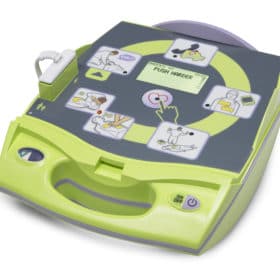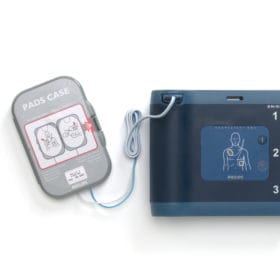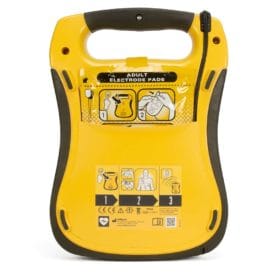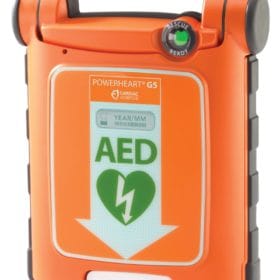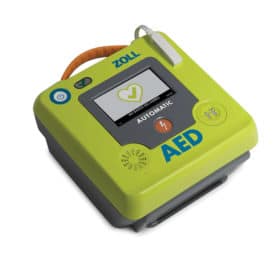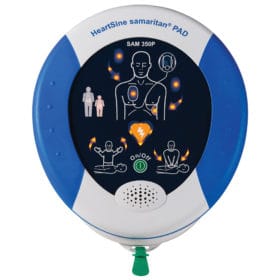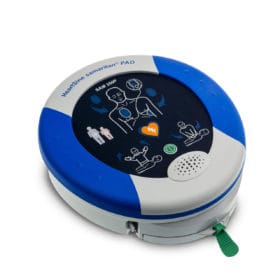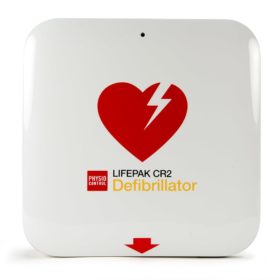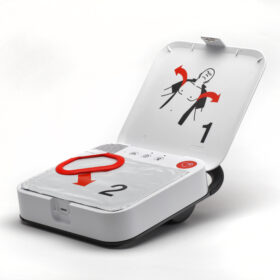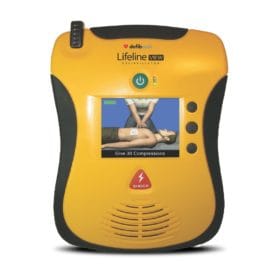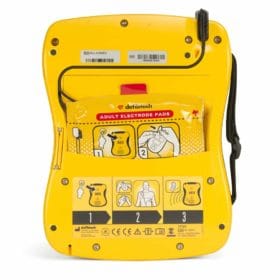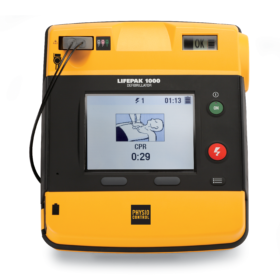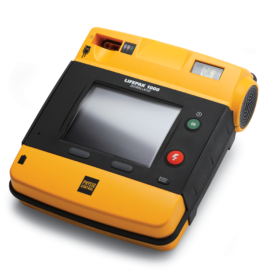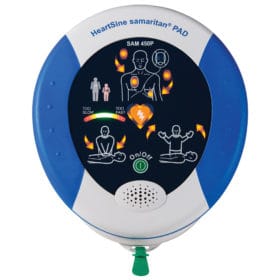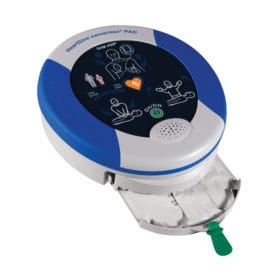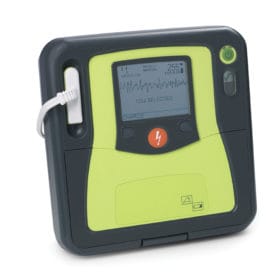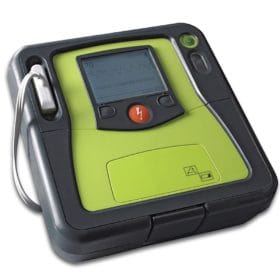- Your cart is empty
- Continue Shopping
Church Defibrillators – Automated External Defibrillator
Overview
The population of the United States is close to 304 million. Approximately 44 percent, or almost 134 million Americans, attend some type of church service every week. 450,000 Americans suffer from sudden cardiac arrest (SCA) every year, that’s almost 8,700 people per week (one person every two minutes). If we assume that the average person spends about two hours in church every week, approximately 104 people will suffer an SCA while they are at church. It makes sense, therefore, that automated external defibrillators (AEDs) should be an important part of securing the health and safety of church members. When implementing an AED program, churches need to consider the following:
- How many AEDs are needed to ensure a 3-minute response time
- How to train staff and others on cardiopulmonary resuscitation (CPR) and AED use
- Who will notify EMS for transport to a hospital
- Who will check the AED devices routinely
ZOLL AED Plus
$2,082.00Philips HeartStart FRx AED with FREE Carry Case 861304
$2,010.00 – $2,109.00Defibtech Lifeline AED DCF-100
$1,762.66 – $1,910.04ZOLL AED 3
$2,307.00Benefits
The benefits of having an AED in a place of worship, or any public place for that matter, far outweigh the costs of implementing an AED program. During a sudden cardiac arrest, studies have shown that without treatment, the chances of the SCA victim’s survival lessen by ten percent for every minute that passes. Cardiopulmonary resuscitation (CPR) can help keep the blood circulating throughout the body and brain for a short time, but ventricular defibrillation is the only way to get the heart restarted and pumping on its own.
Sudden cardiac arrest occurs when the heart goes into ventricular fibrillation (VF). VF can occur when the heart sustains a trauma (like a blow to the chest) or sometimes for seemingly no reason at all. When VF occurs the heart begins to beat erratically; the victim loses consciousness and then stops breathing. If treatment is not started within 3 – 5 minutes, the victim can suffer brain damage; if the heart is not restarted in less than 10 minutes, the victim almost always dies.
Calling 911 and starting CPR are important first steps. But emergency response teams and paramedics can take longer than the vital 3 – 5 minute window to reach the victim, and by the time EMS arrives, irreversible damage may have already happened. Having an AED in the church building is the only way to ensure that the SCA victim receives the necessary defibrillation (restarting of the heart) treatment within those first critical minutes.
Features
The American Heart Association, the American Red Cross and other public health and safety organizations, along with local emergency medical services all provide CPR and AED training. Many AED training courses can be completed in four hours or less and trainees do not have to be medical professionals or have a medical background.
Automated external defibrillators have become less expensive and more user-friendly. Most AED units are portable and easy to use. Many come with voice prompts that tell the first responder if a shock to the heart is needed, and when to administer it.
In late 2002, Mr. Ellis Barker of Newport, Kentucky, collapsed just as he had taken a seat in his regular St. John’s United Church of Christ pew. His friend, Lisa Daniels, who is a nurse, was sitting next to him. She immediately began to administer CPR, while someone else called 911. Another church member grabbed the new and never yet used automated external defibrillator and brought it to Ms. Daniels. She had to shock Mr. Barker three times before the paramedics arrived to transport him to the hospital. The emergency room doctor said that it was likely that Mr. Barker would have died had it not been for Ms. Daniels’ quick actions and her use of the AED.
Things to consider when starting an AED program in a church are fairly straight-forward and simple but some thought and planning is needed.
The size of the congregation, and the layout and square footage of the building(s), needs to be taken into consideration. Churches that occupy a small, one story building may only need one AED; while churches that have multiple floors and/or multiple buildings may need several units, perhaps one for each floor and one for each building.
In Little Rock, Arkansas, the 4,000 member Pulaski Heights Methodist Church has purchased four AED units for its Automated External Defibrillator Ministry and has trained more than sixty members on their use.
Choosing the first responder team is an important consideration as well. Making sure that at least one trained AED first responder is on site at each church function, and during the church’s normal daily operations, is necessary to ensure that no SCA victim goes untreated. Determining who will check the AED equipment for routine maintenance is as important as having AED trained personnel. A dead battery could mean the difference between a successful SCA rescue and sudden cardiac death.
Many churches provide vital spiritual assistance in today’s stress-filled American society. And now, with automated external defibrillators widely available, and financially accessible, today’s churches can also provide vital physical assistance as well.
Please provide more information about AED Defibrillators for Churches - View The Guide Now!
- ALS Monitor/Defibrillators
- Church Defibrillators – Automated External Defibrillator
- Dental Office Defibrillators
- Emergency Preparedness Kits – Office Defibrillator
- Golf Course Defibrillators
- Gym Defibrillators
- PAD Program – Public Access Defibrillator
- Police Defibrillators
- Professional Defibrillators – Fire and EMS Defibrillator
- School Defibrillators
Loading...
The best AED for your needs
Philips HeartStart FRx AED with FREE Carry Case 861304
Would you like these results sent to your email?
If so, just fill our your email address below and submit.
